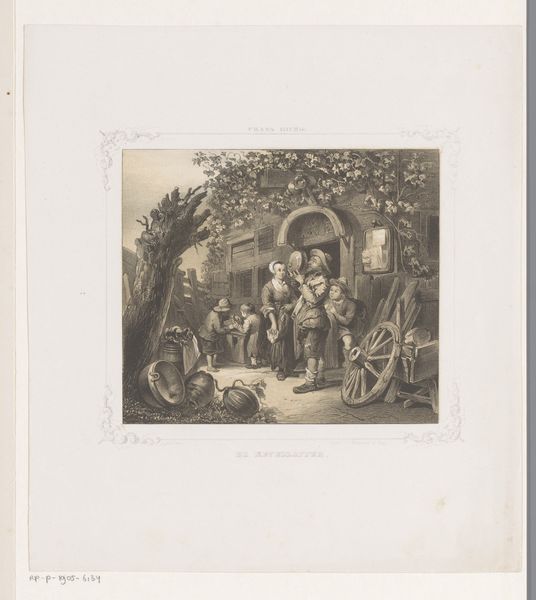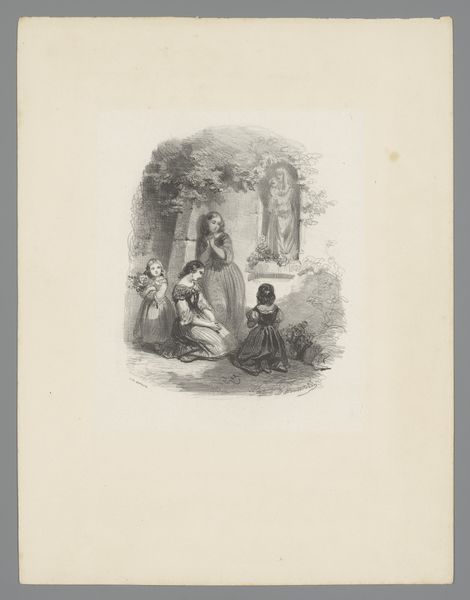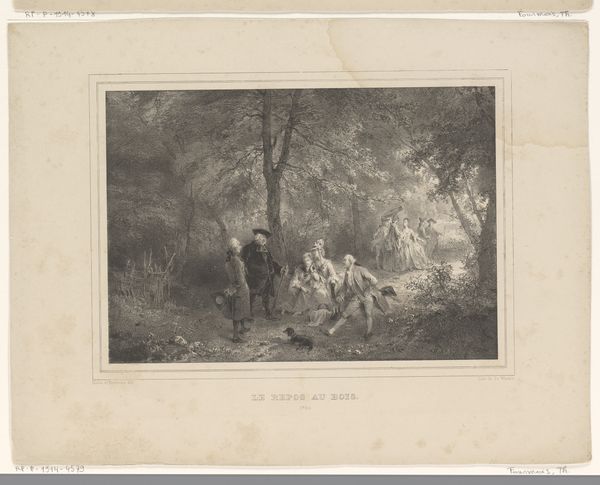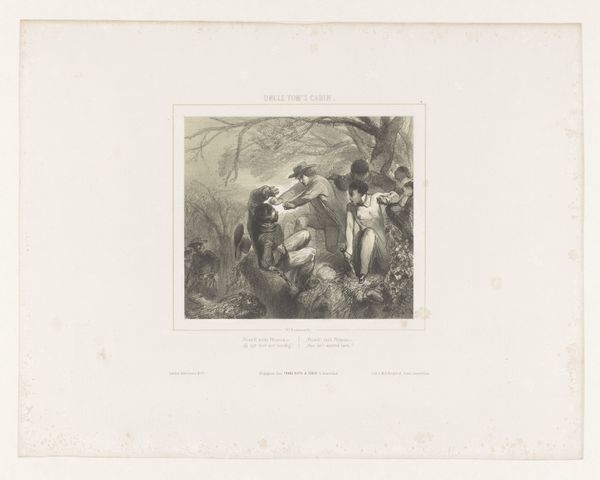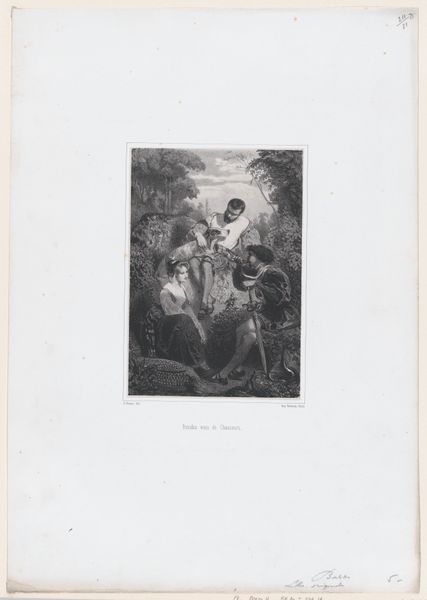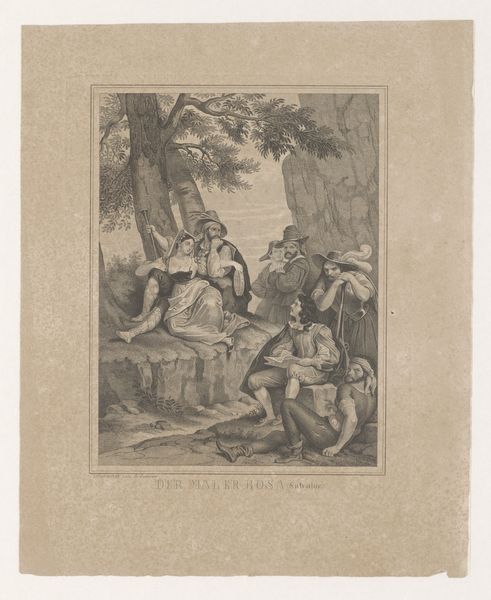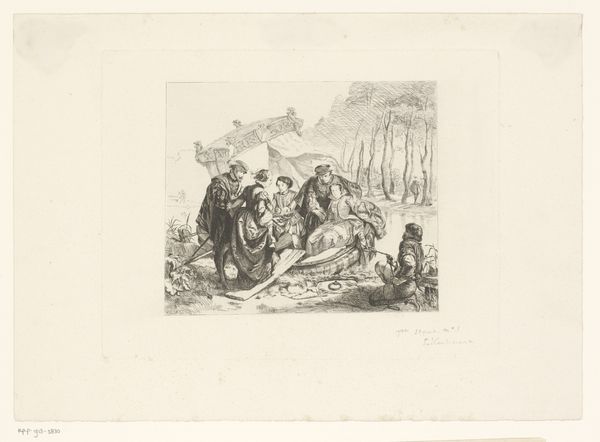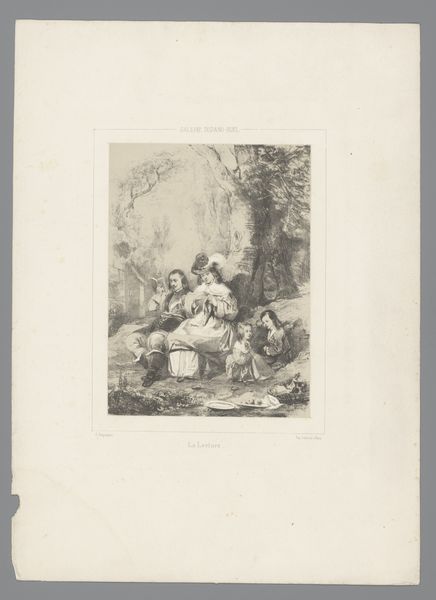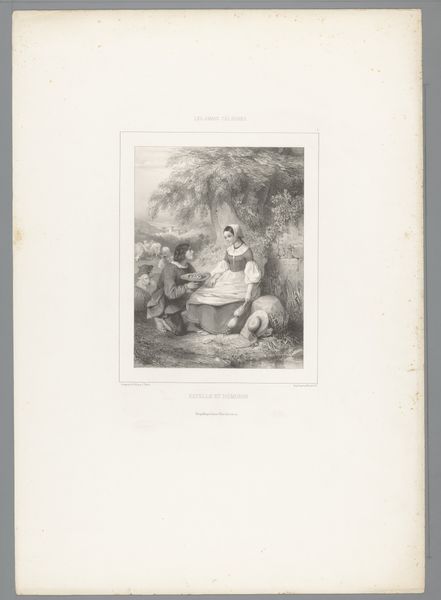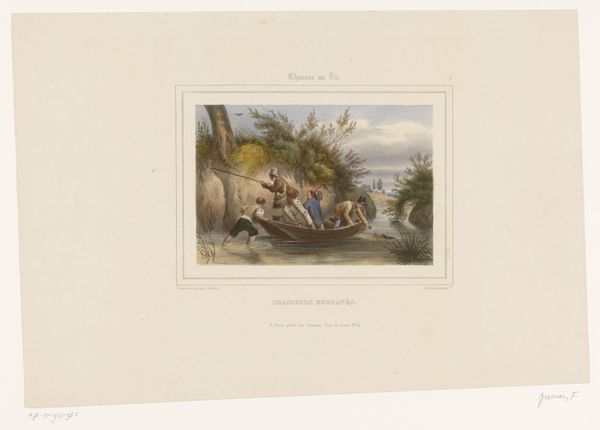
drawing
#
drawing
#
landscape
#
figuration
#
forest
#
romanticism
#
watercolor
Dimensions: height 360 mm, width 273 mm
Copyright: Rijks Museum: Open Domain
Editor: So this watercolor drawing, "Groep bandieten klaar voor de overval" or "Bandits preparing for a robbery" by Jules David, painted sometime between 1830 and 1854. It's pretty dynamic, a little theatrical. How do you interpret it? Curator: Well, consider the material conditions of its production. Watercolor was becoming increasingly accessible then, fueled by industrial advances in paper and pigment manufacture. David’s choice of this relatively inexpensive medium suggests a particular target audience and, perhaps, a desire to represent a kind of popular, romanticized view of banditry. Editor: That's interesting. So the choice of materials itself speaks to a broader social context? Curator: Precisely. The rise of watercolor coincided with an expanding middle class eager for easily consumable, picturesque imagery. How does the idyllic rendering of this forest setting – clearly, a product of artistic choices in color and composition – square with the potentially brutal reality of a bandit ambush? Is David offering social critique or simply feeding a romanticized vision? Editor: I guess I hadn't thought about how the material, watercolor, influenced the style. It definitely gives it a lighter, less serious feel. Curator: And the landscape, itself? Think about the labor involved in its very representation. Consider, too, that paper’s production likely involved exploitation of both natural resources and labor. It compels one to consider art's place in a rapidly changing world. Does seeing this work alongside its historical materialism, does it affect your original thoughts about it? Editor: It makes me realize that what appears to be a simple drawing actually contains a complex web of economic and social factors, which is kind of mind-blowing! Curator: Exactly! And remember, this work isn't just an object of beauty, but an object *of production*, inextricably linked to the material and social world. Editor: I'll definitely look at art differently now, considering not just what is depicted but also how and why. Thanks.
Comments
No comments
Be the first to comment and join the conversation on the ultimate creative platform.
